Japanese Armoured Units on Java Island, 1942
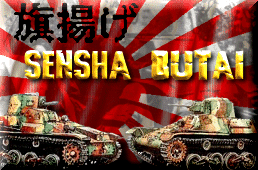
The Japanese conquest of the Dutch East Indies was progressing more smoothly than the Japanese had expected. Borneo, Timor, Bali and Sumatra had been occupied. Surrounded by Japanese occupied islands, Java, the core of the Dutch East Indies was utterly isolated. The Japanese GHQ advanced the schedule of the Java conquest by one month and ordered the 16th Army to invade Java at the end of February.
According to the Japanese plan, the 16th Army was to land on Java at three places at the same time. The Main force, the 2nd Division and other units under the direct control of the 16th Army, to land on Merak, east end of Java. The Shoji Detachment to land at Eretanwetan. The 48th Division and Sakaguchi Detachment to land on Kragan. The following armoured units were attached to these forces:
• 2nd Division
- 2nd Company and 4th Company of 2nd Tank Regiment (21 Type 97 Medium Tanks)
- 2nd Recon Regiment (16 Type 97 Tankettes)
• Shoji Detachment
- 1st Company of 4th Tank Regiment (10 Type 95 Light Tanks)
• 48th Division
- 3rd Company of 4th Tank Regiment (10 Type 95 Light Tanks)
- 3rd Company of 2nd Tank Regiment (10 Type 97 Medium Tanks, 5 M3 Light Tanks)
- 48th Recon Regiment (16 Type 97 Tankettes)
• Sakaguchi Detachment
- 56th Infantry Group Tankette Unit (8 Type 97 Tankettes)
• North Sumatra Campaign
- 2nd Company of the 4th Tank Regiment (10 Type 95 Light Tanks)
The tank company was assigned to the Kamiyoshi Detachment and advanced to
Bengkulu. No enemy was found during the advance.
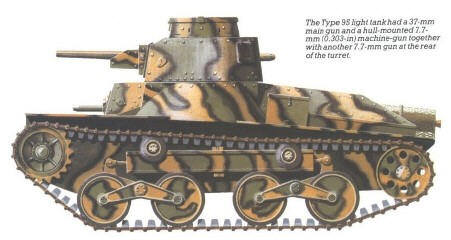
Japanese Light Tank Type 95
After the occupation of east Borneo, the Sakaguchi Detachment was ordered to participate in the conquest of Java Island. On February 24th, the Sakaguchi Detachment had left Balikpapan together with the 48th Division. After waiting some days on the sea until the naval battles had ended, they landed on the beach of Kragan on March 1st. When the landing boats were approaching to the beach, some allied airplanes attacked their boats and they suffered some casualities. However, as soon as they landed, they advanced inland and occupied the town of Blora the day after D-day. The Sakaguchi Detachment planned to advance west and occupy Tjilitjap. Their duty was to cut off the retreat of the Allied forces in West Java.
The van of the Sakaguchi detachment was composed of one tankette unit, one infantry company, one field gun platoon and one AT gun platoon. The tankette unit of the Sakaguchi Detachment had been the 4th Company of the 56th Recon Regiment. It had been converted to an independent tankette company and was attached to the Sakaguchi Detachment. The commander was Captain Anai and the unit was also called the Anai Tankette unit. On February 4th, when they were advancing around Poerwodadi, they encountered an Allied mechanized unit. They forestalled the enemy and attacked them skillfully. The enemy abandoned their vehicles and fled. They captured a dozen enemy vehicles.
The van was chasing the fleeing enemy and approaching was Soerakarta in the evening. The main body of the Allied force was defending at Soerakarta. The van scouted the enemy position carefully and they commenced an attack after sunset. The intense combat was continued during the night. The tankettes and one infantry platoon dashed toward a bridge under heavy enemy fire and captured a bridge before it was blown up. On the bridge, explosives had already been set by the enemy. During this combat, a dozen infantrymen had fallen and Lieutenant Fuchigami, platoon leader of the tankette unit was wounded.
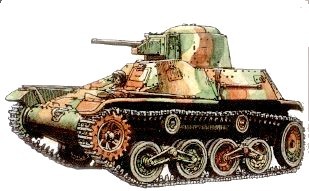
Japanese tankette Type 97
Around dawn, the tankettes crossed the bridge and attacked the enemy on the opposite bank. The enemy's force was comprised of approx. 600 men and ca. 70 vehicles. Tankettes overran the enemy MGs and artillery and fired on the enemy positions and vehicles. The enemy had been defeated and fled toward Jogjakarta.
The 48th Division landed on Kragan togather with the Sakaguchi Detachment. Their aim was to occupy Soerabaja. However, the allies had destroyed roads and bridges on the way to Soerabaja everywhere and their march was frequently delayed. On March 2nd, the Japanese troops reached Tjepoe but the bridge over the Solo River had already been destroyed. The Japanese engineers worked hard and laid a temporary bidge over the river on March 4th. Japanese light tanks crossed the bridge. But an M3 Light Tank, which was captured in the Philippines, attempted to cross it and broke the bridge. The US light tank is almost as heavy as the Japanese medium tank!
Meanwhile, the 48th Recon Regiment marched on the east flank of the main force and crossed the Solo river at Bodjonegoro on March 3rd. On March 5th, when they were approaching Babad, they engaged the enemy at about 400-500m distance to the town of Babad. There were rice fields on both sides of the road and the enemy was ambushing in the forest. M3 Light tanks advanced on the road, but they were hit by enemy AT guns and had to retreat. The tankette companies of the recon regiment dashed to the enemy position and occupied it after four hours of combat. However, the recon regiment suffered several casualities during this combat.
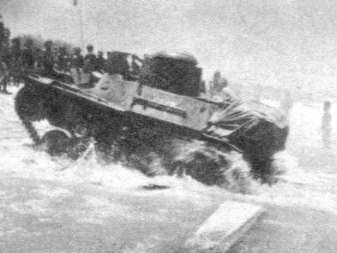
Type 97 Tankette landing on the beach of Kragan, Java Island, March 1942.
This tankette is supposed to be one of 48th Recon Regiment.
The main forces which had crossed the Solo River advanced to Kertosono. The bridge at Kertosono had been destroyed, but the bridge at Kediri was occupied before it was blown up. The Japanese troops crossed the Brantas River and had reached Porong on March 6th. The town of Porong was fortified by the Allies but Japanese troops accompanied by tanks quickly occupied Porong. Nearly 1,200 to 1,300 men of the Allies gathered at Kepanjen and a part of them made a counterattack against the Japanese at Porong, but they were repulsed. The Japanese troops attacked Kepanjen and cut the Soerabaja-Malang road.
On March 8th, the Japanese were ready to assault Soerabaja. At that time, a white flag was hoisted on the bridge at the south end of Soerabaja. The assault against Soerabaja was cancelled and the Japanese negotiated with the Allies. On March 9th, all Dutch forces in the Dutch East Indies surrendered. The Dutch troops in Soerabaja also surrendered. The fight of the 48th Division on Java ended.
The 2nd Division was the main force of the Java conquest forces and the 16th Army HQ accompanied the 2nd Division. Their landing place of Merak was at the west end of Java Island and they planned to advance east aiming at Batavia. On the way to Batavia three bridges cross Tjioedjoeng River. The southern one is at Rangkasbitoeng, the central one is at Pamarajan and northern one is at Kopo. In order to capture these bridges before they are blown up, the 2nd Recon Regiment was ordered to land first and dash toward the bridges. The Regiment was divided into three groups. The K Advance Group (5 tankettes) aimed at Kopo, the Right Advance Group (5 tankettes) aimed at Rangkasbitoeng and the Left Advance Group (3 tankettes) aimed at Pamarajan. The commander of the 2nd Recon Regiment was Lieutenant Colonel Noguchi.
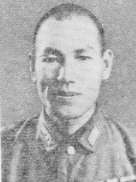
Lieutenant Colonel Noguchi, the commander of 2nd Recon Regiment.
At midnight of March 1st, 18 Daihatsu boats had left the ships and motored to the beach of Merak. At 2:30 theboats had reached the beach. Immediately, Japanese troops left boats and advanced toward Serang in the darkness without lights. Although there was some fighting with some small enemy troops, they reached Serang bridge at 4:00. They attacked the bridge guards at once and the brigde was occupied by the Japanese before it cold be blown up.
After Serang, the Recon Regiment separated into three groups. The Right Advance Group was marching on the road between Serang and Rangkasbitoeng. On the way, they captured a score of enemy soldiers who were retreating on three trucks. The commander of the Right Advance Group planned a trick to delude the bridge guards. He set a captured enemy truck at the head of the troops and pretended he was Allied. At 9:30, the captured truck which concealed Japanese soldiers appoached the bridge and was passing through the bridge guards. At that moment the bridge blew up with a blast of sound. The trick failed and the bridge was lost. The bridge guards fled and the enemy on the opposite bank opened fire. The Japanese troops engaged the enemy and drove them away. The Right Advance Group secured Rangkasbitoeng, then returned to the Recon Regiment at 15:00.
When the K Advance Group entered Serang, the command tankette drove on a mine and the driver was badly wounded. However the Commander, Nakamura, was safe as luck would have it. The K Advance Group reached Kopo at 4:50, but the bridge at Kopo had already been destroyed. When entering Kopo, Indonesian KNIL troops opened fire against the Japanese. Commander Nakamura shouted to the enemy in the Indonesian language: "We are Japanese. Surrender!". The Indonesians gave up their arms and surrendered one after another.
The Left Advance Group was dashing forward to Pamarajan. At 9:00, they reached Pamarajan and the Commander, Shiraishi, crossed the bridge at a dash. Halfway over the bridge, he noticed that the enemy soldiers were trying to ignite the explosives set on the bridge. He fired his tank gun and killed them. An enemy armoured car had come up behind them. He fired again and destroyed the enemy armoured car. The Japanese infantrymen bravely dashed onto the bridge and removed the explosives. A safe bridge oner Tjioedjoeng River was secured by the Japanese. It was a significant triumph of the Japanese tankette unit.
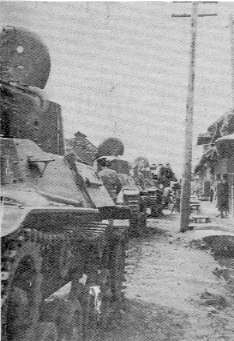
Type 97 Tankettes of the 2nd Recon Regiment on Java Island, March 1942.
On the afternoon of March 3rd the van of the Recon Regiment reached at Rauilian. On the road to Rauilian there were a lot of barricades and they were frequently delayed. When they reached Rauilian the bridge on the Tjisadane River had already been destroyed. Two Japanese crewmen got off the lead tankette and walked to the river. When they reached the riverside, the enemy opened fire suddenly and the two Japanese crews fell. The enemy located on the hills on the opposite bank fired MGs and artillery. The tankettes fired on the enemy postions. The Japanese field artillery took part in the fight and bombarded the enemy fortifications. The fierce fight continued all day, but the river was still an obstacle which could not be crossed by the Japanese.
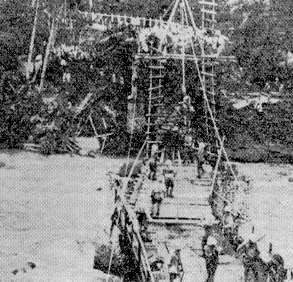
The destroyed bridge at Rauilian.
In the evening, General Nasu, the commander of 2nd Infantry Group, and 16th Infantry Regiment arrived at Rauilian. General Nasu ordered the 16th Infantry Regiment to make a night attack on the enemy on the opposite bank. The 16th Infantry Regiment crossed the river 3 km south of Rauilian and attacked the enemy on the hills in the flank. The enemy defensive positions were occupied by the Japanese and the enemy troops routed.
The map is the courtesy of Akira Takizawa
On the morning of March 5th, the Recon Regiment crossed the Tjisadane River by rafts and advanced towward Buitenzorg. On the morning of March 6th, The troops of the Nasu Detachment rushed into Buitenzorg and occupied it. The Recon Regiment was ordered to advance to Soebang and was prepared for the march at Buitenzorg until March 8th. When they were marching on the road to Soebang, they heard that the Dutch forces in the Dutch East Indies had surrendered.
During the campaign of Java, the tank unit attached to the 2nd Division was marching in the rear and could not participate in the fights at the front. They only mopped up the enemy troops in the rear.
Errata
At midnight of March 1st, Shoji Detachment landed at Eretanwetan. Though some Allied airplane attacked them before landing, there had been no casualities. The main aim of Shoji Detachment was to capture Kalidjati Airfield and enable the Japanese air unit to advance there.
The van of Shoji Detachment departed the landing point in the morning and advanced to Kalidjati Airfield. While advancing to the airfield, they met several Allied troops. They had defeated them and hurried to the airfield. At noon, they reached the airfield and occupied it. The airfield was not destroyed and it was possible for airplanes to land.
Allied troops accompanied by armoured cars attacked the Japanese at the airfield several times. The Japanese were fighting courageously and repulsed all enemy attacks. The landing of the remainder of Shoji Detachment was delayed by Allied air raids. The tank unit landed from ships at last and hurried to the front. On the morning of March 2nd, approx. 20 allied armoured cars rushed at the airfield, but they were checked by Japanese infantrymen and tanks. Type 95 Light tanks of the 1st Company destroyed one Allied armoured car and captured five armoured cars.
From March 2nd, Japanese airplanes were landing at the airfield. It was the decisive factor of the fight. On March 3rd, the Allies launched a large counter-attack against the Japanese at the airfield. However, the allied troops marching on the road had been attacked by the Japanese planes heartlessly for over three hours and they had been scattered before they reached the front.
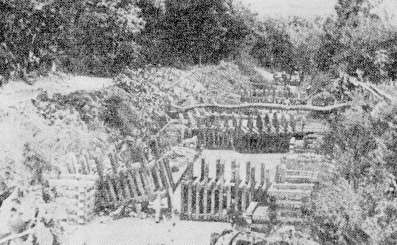
The Dutch Anti-Tank Barricades, Java Island, March 1942.
After the fight of March 3rd, Colonel Shoji believed that the Allies no longer had enough strength to undertake a large counter-attack. So, Colonel Shoji made up his mind to send troops to Bandoeng. It was reported that Bandoeng was well fortified and many allied soldiers defended there. Colonel Shoji intended to probe the Bandoeng defences and to establish a bridgehead on the Bandoeng fortification if possible.
On March 5th, Wakamatsu group, consisting of three companies, advanced south along the road from Soebang for Bandoeng. To the south of Chatel(?), the tanks in the lead of the troops found enemy pillboxes and engaged them. Fortunately, there were a lot of trees and the view from the pillboxes was limited. The Japanese infantrymen and engineers crept in the blind spots of the pillboxes and they destroyed five pillboxes before dark.
Next day, knowing from POWs that the allied defenders were not so many and there was a gap in the defensive line, the Japanese troops infiltrated the enemy positions and attacked a hill behind the enemy line. By a sudden attack of the Japanese, the allied troops on the hill panicked and fled to the rear. The Bandoeng defenders were disturbed by the important hill of the Bandoeng defensive line being occupied by the Japanese. They were afraid that the Japanese main force would follow the Japanese troops on the hill. On March 7th, Major-General J.J. Pesman, the commander of the Bandoeng defence forces, sent a messenger to the Japanese and proposed the surrender of the Bandoeng defence forces. General Imamura, the commander of the 16th Army, requested a meeting with Lt-General Ter Poorten, the commander of the Dutch army on Java. On March 8th, they met at Kalidjati Airfield and General Imamura requested the surrender of the whole Dutch army in the Netherlands East Indies. On March 9th, Lt-General Hein Ter Poorten broadcast a statement announcing the surrender of the Dutch KNIL forces.

